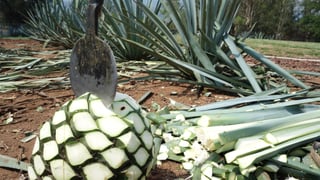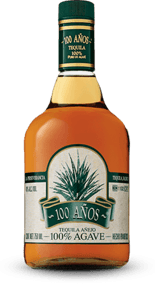
Which is the best tequila? How should I drink it? What does it go with? This are some of the questions that as a Master Distiller I am most frequently asked and, the easiest answer is: The tequila that you like best and better satisfies your senses of smell and taste. Still, a better answer would take into account those quality attributes, both sensory and physical-chemical, that would allow us to better discriminate among the many options that are now available at the market.
An essential fist step is learning to discover the sensory notes of each kind of tequila, from a white to an ultra-aged one. In this article you will learn about the flavors and tastes that you should look for and detect in each tequila so you can, in the end, decide which is your favorite one.
What is a sensory profile?
A sensory profile helps us identify a drink's quality, including its complexity degree (as in the opposite of simple, the not-so-easy to describe), based on our senses. This qualities are referred to as the notes or aromas and tastes that a drink has to offer. In this article, we will be referring only to those notes that our tequilas have. By recognizing this notes, we will better decide how to use each tequila, whether if we want to mix it in order to create different tequila-based drinks and cocktails or we want to drink it all by itself so we can better perceive the wide range of aromas and tastes that each of tequila has to offer. Sensory profiles also suggest the way we can match certain kind of dishes with the appropriate tequila, which is what we call wine-pairing.
The sensory profile of a tequila should be done just like it is done with any other spirit drink, which is by detecting its characteristics by means of three senses:
- sight
- smell
- taste

Regarding the sight, we have to observe the transparency of the liquid, its purity or cleanliness, as well as its body, which is how dense the liquid is perceived. Finally, we also have to observe its color, which will tell us if the tequila has been indeed rested or aged.
With our sense of smell, we must perceive the presence of multiple aromas and their strength. There is a wide range of aromas that go from the most basic ones that all spirits have, which are the alcohols, to the a full range of herbal, floral, fruit, woody, and more.
With our sense of taste, we confirm the notes that we had already perceived with our sense of smell. Taste is a limited sense because the variety of flavors that we can detect are only 5: sweet, salty, bitter, sour and umami (this last one is one of the 5 basic flavors, the word is in Japanese and refers to a nice, tasty flavor).
In order to detect and identify all the sensations that make up the pleasant experience of drinking tequila, we need to have practice and know what is it we can find on each tequila: what should be present, what is missing and, definitely, what should not be there -since this last ones are the flaws a drink may have.
What should a tequila taste like?

Depending on the category and kind of tequila, we might find different aromas and flavors that are the result of the different processes of extraction, hydrolysis, fermentation, distillation, filtration and aging of tequila's raw material: Tequilana Weber Agave, blue variety.
But, what should a tequila taste like? The first thing we should perceive is the raw material. Fresh agave has a herbal and fruity profile. Some people relate it with notes similar to those of a green pepper (vegetable), and can even perceive a little bit of a spicy flavor. Others describe it as something close to green pepper (spice). These notes are essential, since they are our main reference to the raw material, the agave. We, at Casa Sauza, always try for our processes to keep those raw notes and aromas, like we do in our gentle extraction of sugars process.
The second thing you should perceive in our tequilas, specially the white ones, are the notes of citrus fruits, which are present in all our brands. Some can even generate a bitterness feeing, as if it were a citrus note that came from the skin of a grapefruit. These notes are obtained mainly during the processes of hydrolysis and fermentation.
At the same time, we perceive floral notes similar to the smell of jasmine, and we also find sweet notes, ones that we can relate to a baked pumpkin, which would be the fundamental aroma of a cooked agave juice. Rested and vintage tequilas increasingly add more complex notes, which come from their aging period in the pipones and the American white oak barrels that we use. These barrels provide the different woody notes, which depend on the toasting levels of the wood. The period of time of the tequila's aging process also influence these notes. The barrel's woods can be perceived like burnt or roasted aromas, as well as bitter flavors, but also with sweet notes that could remind us of vanilla and chocolate.

Finally, there is also a universal note that is present in all spirits, which is the alcohol, both ethanol as well as the so-called higher alcohols. The latter provides a great sensory richness that we do not detail in this article. A tequila producer must be really careful not to exceed these notes, since they can supersede all the others, specially to those people who are very sensitive to these aromas.
With time and practice, you can get to detect many other notes that will make of the tasting of tequila, an even better experience. These notes come from the raw materials and from the processes that each tequila producer carries out. And this is what makes the difference between one brand and another.
Do you want to know how does a white, young, rested, aged and ultra aged tequila taste exactly like? Don't miss our next blog post!
You can also come to Casa Sauza and learn all about the production of tequila on-site!
.png?width=50&height=50&name=10.CS-Redondo%20(1).png)
 Fernando Ávila
Fernando Ávila